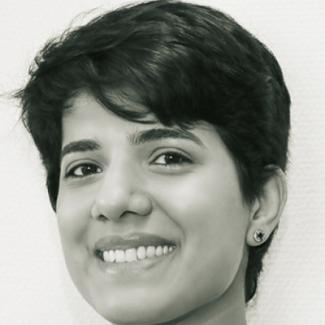Gender justice
How education and employment improve gender equality
 picture alliance / ZUMAPRESS.com / Mustasinur Rahman Alvi
picture alliance / ZUMAPRESS.com / Mustasinur Rahman Alvi
Today’s gender inequalities can be traced back through the millennia. Socio-cultural traditions and economic processes play important roles. Undoing the impacts is no trivial task, but feasible.
Around the world, women’s disempowerment is evident in many ways. Women have fewer opportunities in regard to education, skills training and employment. Moreover, women across the world own fewer tangible and intangible assets. Even when women have the same professional competence and indeed do the same work as men, they are regularly paid less. Gender wage gaps persist around the world. Moreover, women everywhere do a disproportionate share of care and household work.
Two other international phenomena are that:
- women’s health-care needs get less attention even though they are more complex than men’s and
- they are particularly exposed to violence.
While perfect equality between men and women has not been achieved anywhere, international comparisons show that the worst inequalities exist in regions of the global south. Progress requires several things:
- Women’s access to tangible and intangible resources must improve.
- They must get more say in decision-making, both in private and public affairs.
- Women’s and girls’ well-being must be considered just as important as the well-being of men and boys.
Formal education does not solve all problems, but it is of crucial relevance. First of all, literacy and numeracy are important in themselves (see my essay on www.dandc.eu). Without them, it is neither possible to access and process new information independently, nor to manage money issues properly.
Moreover, school education hones women’s cognitive and intellectual capacity. It also enables them to understand their rights and access state institutions including law courts. In a similar vein, only literate persons tend to get access to sophisticated financial services.
Experience shows, moreover, that self-confident women have a greater impact on family life, are more likely to reject sexual harassment and feel more empowered to raise their voices in public life. Progress towards gender justice thus depends on several, mutually reinforcing factors.
Better access to schools
It is obvious that girls and women deserve better access to primary, secondary and tertiary education. They continue to lag behind their male counterparts. In low- and middle-income countries in 2010, girls’ enrolment rate in secondary schools was only 34 %. By comparison, boys’ rate was 41 % (see Esther Duflo, 2012). Indeed, the gender gap in education in South Asia and sub-Saharan Africa worsened from 1960 to 2010. In both regions, the median gap in boys’ and girls’ years of schooling was more than three years in 2010 (see Evans et al, 2020).
According to Ester Boserup, the Danish economist who is considered to be a pioneer of the field of gender and development, has noted, formal education is key to labour-market opportunities. She wrote in 1970 “As long as girls remain under the twofold handicap of a family education which suppresses their self-confidence and of training facilities in schools and elsewhere which are inferior to those given to boys, they are bound to be inferior workers.”
To earn money, women must typically participate in the labour force. If they earn enough, they can begin to save and accumulate assets. History – or rather “herstory” – shows that this pattern is prevalent in societies where women’s status has improved. Wherever jobs made large numbers of women more independent financially, gender disparities were reduced overall.
It is telling, for example, that East Asian countries such as Taiwan and South Korea have made more progress than South Asian ones such as India and Pakistan. Gender historian Alice Evans (2021) attributes the reduction in observed inequalities in these regions to women’s participation in paid work.
Virtuous cycle
A similar trend is evident in Bangladesh, where a virtuous cycle has set in. Women’s achievements in formal employment are making people more interested in girls’ education, while better formal education is improving women’s job opportunities. This country was long considered to be South Asia’s “basket case”, but it now ranks higher in the World Economic Forum’s Gender Gap Index than India, Pakistan and Sri Lanka. To judge by success regarding the Millennium Development Goals, Bangladesh was the regional leader as well. Its literacy rates are comparatively high, while its maternal and child mortality rates are low.
Both education and paid work boost a person’s self-confidence. They thus enable women to be more assertive both in family life and public affairs. Household surveys collect information on decision-making in regard to consumption, investments and other aspects of family life. In particular, how many children a family has depends on female education, and responsible sex education is especially important (see Aditi Roy Ghatak on www.dandc.eu). The use of contraceptives becomes more common the better women understand reproductive health and the more self-assured they are in relations with their husbands.
The data show clearly that women’s say in family life increases with their incomes and their educational achievements. At the same time, domestic violence tends to decrease. Educated women are less likely to suffer battering. Self-confident persons, moreover, may also be more confident in rejecting undesired sexual advances and blatant harassment. Around the world, rapists still largely enjoy impunity. Illiteracy and financial dependence arguably make it more difficult for women to take perpetrators’ sexualised violence to court.
It matters, of course, that institutions of formal learning often contribute to fostering gender awareness and ideas of gender justice. In gender-unequal societies, women tend to accept the conditions of their lives as unchangeable (see Mahwish Gul on www.dandc.eu). Where girls are historically excluded from formal education, they are unlikely to resist such exclusion.
Places outside the home are where girls and young women can make new experiences of liberty. Schools and universities matter in particular (see Ipsita Sapra on www.dandc.eu). This is where students often learn to challenge accepted attitudes and behaviour. Discussing experiences of discrimination, violence and exclusion with peers, they start to see the structural nature of women’s oppression. Accordingly, educated women are more likely to participate in civil-society organisations, social movements and political parties.
Health matters
It cannot be over-emphasised how much women’s education improves health outcomes. Greater awareness of nutritional exigencies, for example, tends to benefit entire families. Better access to contraception, antenatal and postnatal, are of obvious relevance, of course, and not only because they reduce the mortality risk for mothers and infants. Reduced levels of domestic violence are good not only for women’s physical health, but for their mental health as well. Their children are likely to benefit too.
However, formal education and employment are no panaceas for women’s empowerment. To some – and often considerable extent – gender discrimination and abuse permeate institutions of learning as well as places of work. Exposure to violence persists. Moreover, household chores remain unevenly distributed. Public policies are needed to address gender justice. At the same time, state action can – and should – further improve opportunities in education and employment. Prudent policymakers will do their best to set in motion virtuous cycles of progress.
References and links
Boserup, E.,1970: Woman’s role in economic development.
(Reprint of 1st edition in Boserup, E., Tan, S. F., & Toulmin, C.: 2013, London: Routledge).
Duflo, E., 2012: Women empowerment and economic development. Journal of Economic literature, 50(4), 1051-79.
https://www.aeaweb.org/articles?id=10.1257/jel.50.4.1051 (paywall)
Evans, A, 2021: How did East Asia overtake South Asia?
https://www.draliceevans.com/post/how-did-east-asia-overtake-south-asia
Evans, D., Akmal, M., and Jakiela, P., 2020: Gender gaps in education. Center for Global Development, Working Papers 523
https://www.cgdev.org/publication/gender-gaps-education-long-view
Sundus Saleemi is a senior researcher at the Center for Development Research (ZEF) of Bonn University. She recently obtained her PhD there. Her thesis dealt with female literacy in Pakistan.
sundus.saleemi@gmail.com




